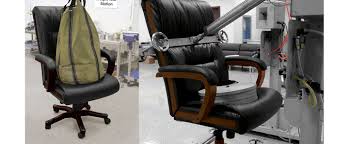Introduction
In the ever-evolving world of education, the concept of seating goes far beyond providing a mere place to sit. Today, educational institutions understand the significance of ergonomic and adaptable seating solutions, not only for student comfort but also for their overall well-being and academic performance. One crucial standard that sets the benchmark for educational seating is the ANSI/BIFMA X6.1. In this article, we will explore the future of educational seating, with a primary focus on the ANSI/BIFMA X6.1 compliance, and how it plays a pivotal role in shaping the learning environment of tomorrow.
Understanding ANSI/BIFMA X6.1
The ANSI/BIFMA X6.1 is a rigorous set of standards developed by the American National Standards Institute (ANSI) and the Business and Institutional Furniture Manufacturers Association (BIFMA). These standards specifically cater to the design, performance, and safety requirements of educational seating furniture. Compliance with ANSI/BIFMA X6.1 ensures that educational seating meets the highest standards of quality, durability, and ergonomics, promoting an optimal learning experience for students.
Advantages of ANSI/BIFMA X6.1 Compliance
- Enhanced Ergonomics: ANSI/BIFMA X6.1-compliant seating is designed with ergonomic principles in mind. The chairs provide proper lumbar support, allowing students to maintain a healthy posture, reducing the risk of musculoskeletal issues.
- Durability and Longevity: Educational institutions often face the challenge of frequent furniture replacement due to wear and tear. ANSI/BIFMA X6.1 compliance ensures that the seating is built to withstand heavy usage, increasing its lifespan and saving costs in the long run.
- Safety First: Student safety is a top priority in any educational setting. With ANSI/BIFMA X6.1-compliant seating, the risk of accidents or injuries due to faulty furniture is minimized, providing a secure learning environment.
- Flexibility and Adaptability: The future of education lies in flexible learning spaces. ANSI/BIFMA X6.1-compliant seating is designed to be adaptable, allowing educators to create versatile learning environments that cater to different teaching styles and activities.
Innovations Shaping the Future of Educational Seating
As technology and educational methodologies continue to advance, so do the innovations in educational seating. Here are some trends that are shaping the future of educational seating beyond ANSI/BIFMA X6.1 compliance:
1. Smart Seating Solutions
In the digital age, smart seating solutions are becoming a game-changer in the education landscape. These seating options come equipped with built-in sensors that monitor student posture and movement. The data collected can provide valuable insights to educators, helping them understand student engagement and comfort levels during lectures.
2. Collaborative Seating Arrangements
The days of rigid, fixed seating arrangements are fading away. Collaborative learning is gaining popularity, and educational seating is adapting accordingly. Innovative seating designs now allow students to form groups easily, encouraging teamwork, communication, and idea-sharing.
3. Eco-Friendly Materials
As environmental consciousness grows, educational institutions are seeking sustainable furniture options. The future of educational seating involves the use of eco-friendly materials, reducing the carbon footprint and promoting responsible consumption.
4. Integrated Technology
Seating is not just about providing a place to sit; it can also integrate technology seamlessly. Some futuristic educational seating designs feature built-in charging ports, personal study lamps, and even integrated tablet holders, catering to the tech-savvy student of today.
Conclusion
The future of educational seating is a dynamic and exciting landscape, driven by the pursuit of creating the best possible learning environments for students. ANSI/BIFMA X6.1 compliance serves as the foundation for quality educational seating, ensuring ergonomic excellence, durability, and safety. Beyond compliance, innovative trends like smart seating, collaborative arrangements, eco-friendly materials, and integrated technology are reshaping the educational seating market.
As we move forward, educational institutions will continue to seek seating solutions that not only comply with industry standards but also foster a conducive and enriching learning environment for students. By staying at the forefront of these trends and embracing the ever-changing landscape of educational seating, we can truly unlock the potential of future generations.








